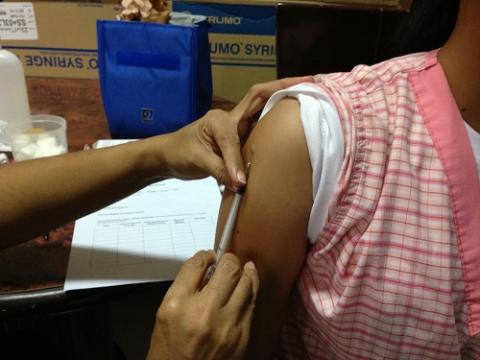Making life-saving vaccine freely available could halve rabies deaths
At present, high costs and supply limitations restrict the accessibility of rabies vaccines in many parts of the world, especially in rural areas in rabies-endemic countries of the developing world. However, new research published in The Lancet Infectious Diseases models how freely providing post-exposure prophylaxis (PEP) for rabies could significantly reduce the number of human rabies deaths and would, at the same time, be highly cost-effective. These landmark findings were derived from modeling studies carried out by the WHO Rabies Modelling Consortium–whose contributors include GARC–and incorporate data obtained from field studies from a wide range of collaborators, including GARC’s own programs in the Philippines.
Using coupled epidemiological and economic models, researchers predicted the impact of a major investment in rabies vaccines by Gavi, the Vaccine Alliance, which would expand access to the life-saving treatment in the low-income countries that they support. The model predicted that such an investment would prevent nearly 500,000 deaths out of the 1 million deaths forecasted to occur in 67 rabies-endemic countries between 2020 and 2035. Importantly, the models showed that the total requirement for PEP vaccine vials would remain about the same (73 million vials), even with greater availability, if the vaccine delivery route was switched to the newly approved intradermal regimen, which uses a reduced volume of vaccine compared to intramuscular delivery. Having free, unhindered access to the vaccine is considered to be an essential tool, alongside the vaccination of dogs, to achieve the global goal of reaching zero human deaths from dog-mediated rabies by 2030.
The researchers explored a variety of scenarios, including incorporating scaled-up dog vaccination programmes to reduce rabies exposures, and limiting demand for PEP by utilizing integrated bite case management techniques. The conclusions in the modelling study provide further insight into optimizing strategies for the long term elimination of rabies, and the risks and costs of different approaches were compared and evaluated.
The researchers drew their conclusions from models built with datasets gathered in multiple countries from multiple collaborators—including from long standing projects led by GARC in the Philippines. The models showed how PEP usage increased when the vaccine was freely available. Projections stemming from these models showed that 45.2 million bite victims are predicted to seek treatment compared to the current 27.8 million. Consequently, with increased vaccine-seeking, deaths and disability-adjusted life years due to rabies were modeled to be significantly reduced.
This research builds the case for increased investment in PEP by the global community, Gavi and national governments. The findings markedly improve the scientific information available on predicted outcomes when bite victims themselves are not responsible for covering the costs of the vaccine and when the vaccine is in good supply. Earlier evaluations by Gavi in 2013 showed that at least 200,000 future deaths could be prevented in the time period of 2015-2030; however the scientific data available then did not allow a complete assessment of the feasibility and impact of vaccine investment.
To close these knowledge gaps, Gavi supported additional field studies on the economic burden placed on endemic countries by rabies and on the impact of economics and education on the treatment seeking behavior of bite victims. The modelling study synthesized these findings with other recent data sets and created a computational platform that can provide the information needed to support enhanced investment into human rabies vaccines.
Louis Nel, Executive Director of GARC added: “It is clear from this study that the scaling up of dog vaccination programmes (addressing rabies at the source), was also accounted for in the modeling approach taken by the authors. Vaccinating dogs not only reduces rabies exposures, but it is the only sustainable mechanism to decrease the demand for PEP and to eventually entirely eliminate dog-mediated rabies.”
It is hoped that this key research can advocate for removing the cost and supply barriers to PEP—as Gavi, the Vaccine Alliance, prepares to re-evaluate its investment strategy in rabies vaccine in December 2018.
Contributed by Laura Baker, GARC, and summarized from the article “The potential effect of improved provision of rabies postexposure prophylaxis in Gavi-eligible countries: a modeling study” , published online in The Lancet Infectious Disease, and from “Investment needed to save thousands of lives through post bite rabies vaccines” from the University of Glasgow on the MedicalPress website.
